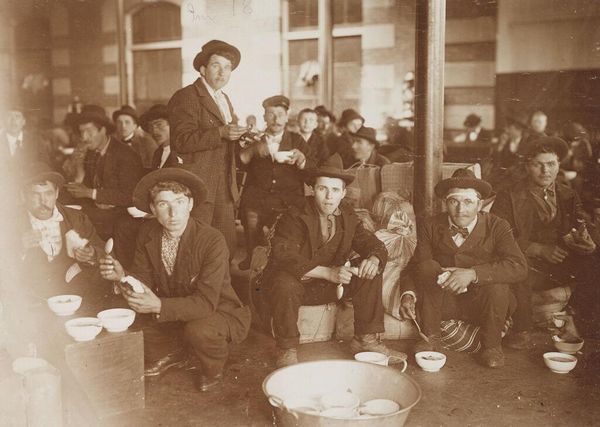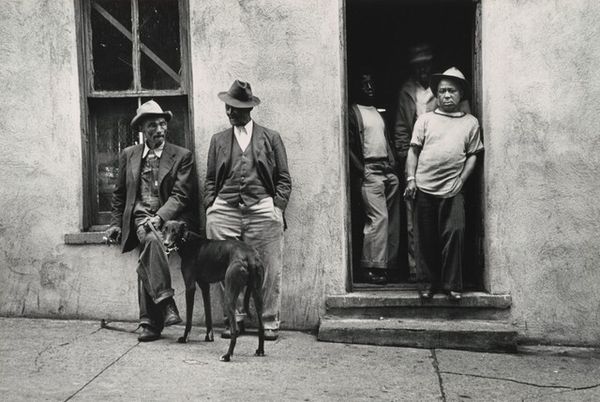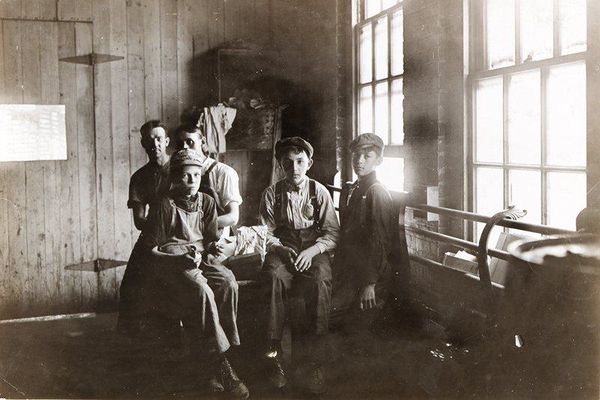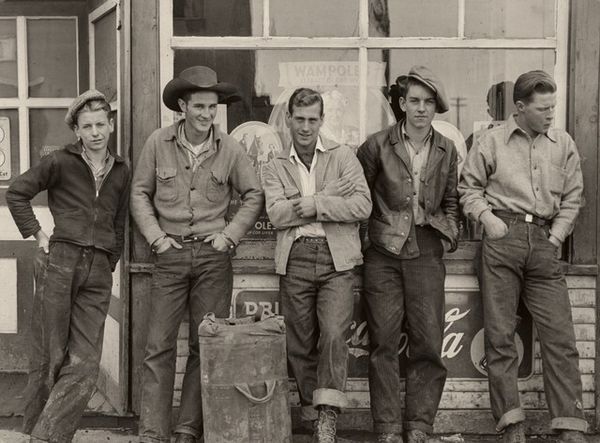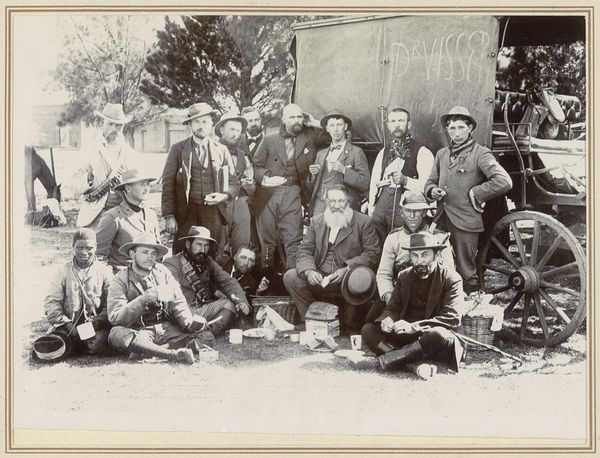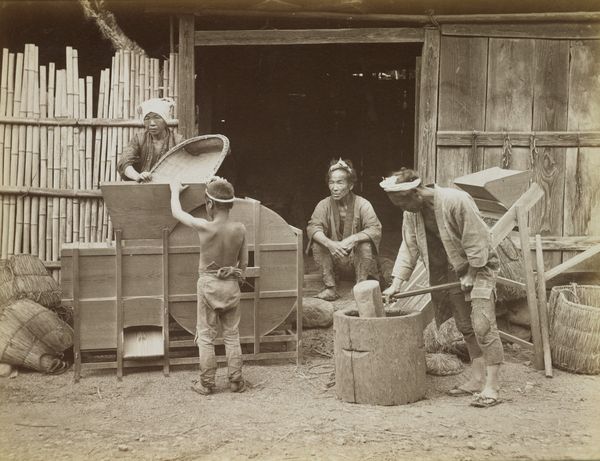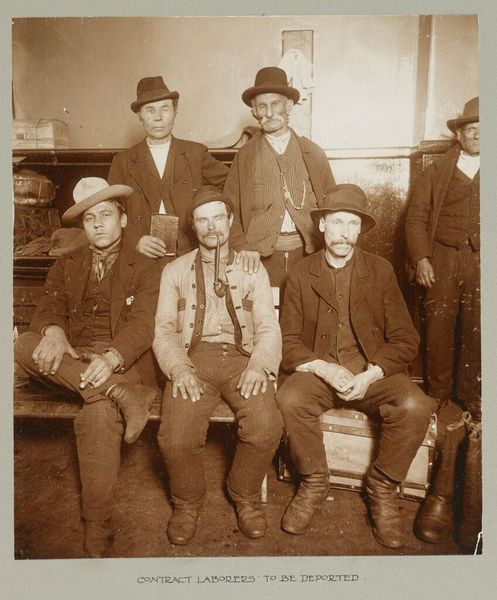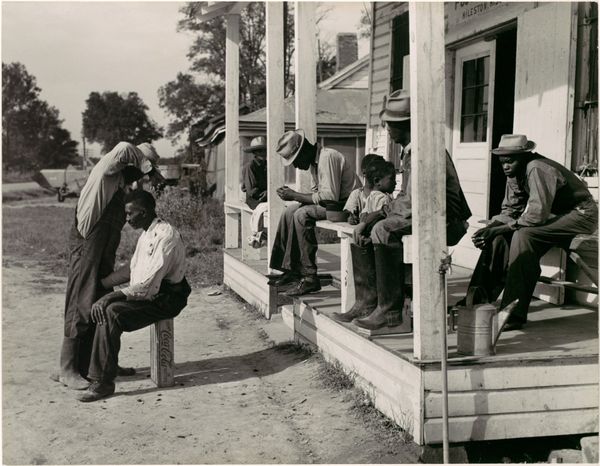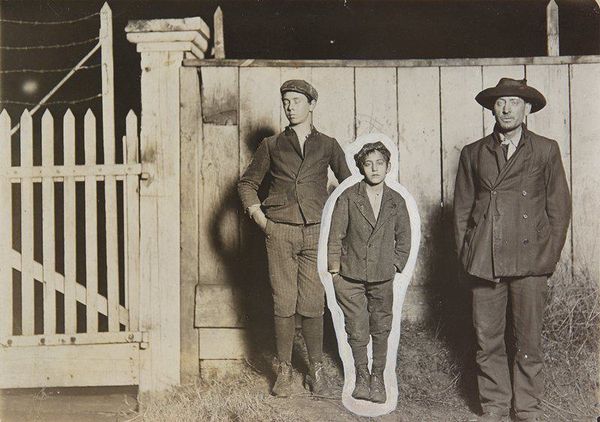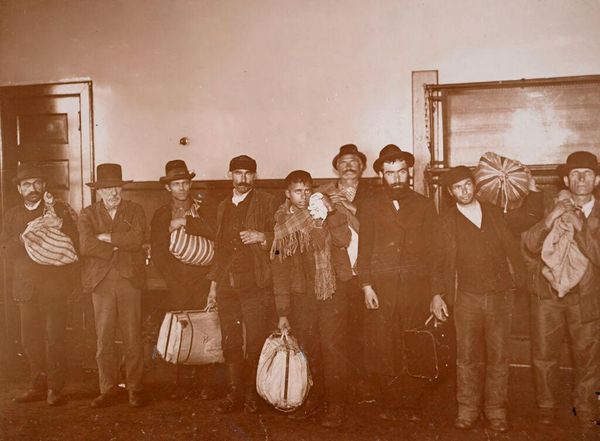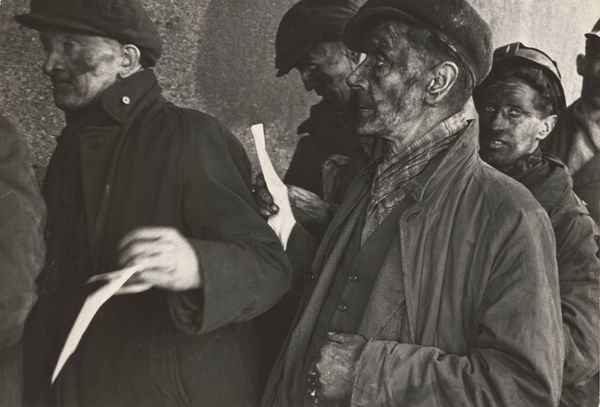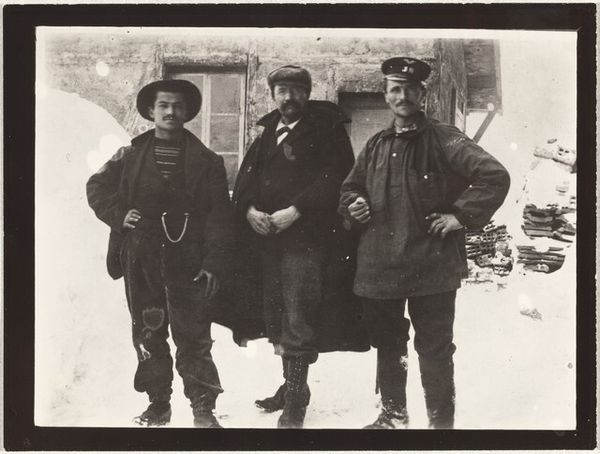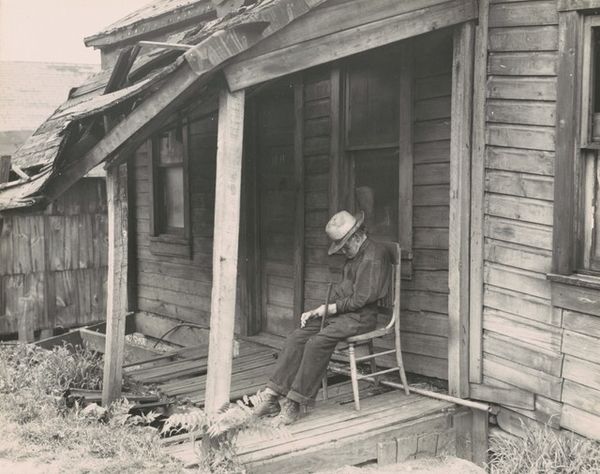
Displaced tenant farmers, Goodlett, Hardeman County, Texas c. 1937 - 1959
0:00
0:00
#
black and white photography
#
photo restoration
#
black and white format
#
warm monochrome
#
archive photography
#
historical photography
#
black and white theme
#
black and white
#
monochrome photography
#
monochrome
Dimensions: image: 19 × 24 cm (7 1/2 × 9 7/16 in.) sheet: 20.3 × 25.2 cm (8 × 9 15/16 in.)
Copyright: National Gallery of Art: CC0 1.0
Editor: Here we have Dorothea Lange’s stark black and white photograph, "Displaced tenant farmers, Goodlett, Hardeman County, Texas," likely taken between 1937 and 1959. The mood is heavy, burdened by a quiet despair. What do you see in this piece, what narratives do you think it's conveying? Curator: The postures of the figures themselves speak volumes. Notice the seated men – their slumped shoulders and averted gazes. These are not simply portraits, they are symbols. They reflect a deeper, collective trauma. What emotional undercurrents do you sense radiating from the image, knowing it captures displaced farmers? Editor: Sadness, certainly, a sense of uncertainty… vulnerability too, maybe? Curator: Exactly! And what does that dilapidated wooden porch behind them represent? It becomes more than mere shelter, it morphs into a potent symbol. Editor: It’s the last vestige of a home. Their support system. Curator: Yes, precisely. And the hats—varied yet ubiquitous—what do they signify? Consider the historical context, the Dust Bowl era… Editor: Protection, both literal from the sun and perhaps symbolic, a shield against the harsh realities? Curator: Indeed. Lange’s genius lies in using such visual elements to convey layered meanings. She doesn't just show us displaced farmers; she evokes a powerful narrative of loss, resilience, and the enduring human spirit. What is your interpretation of what lingers with you? Editor: The lasting impression is that, beyond the despair, these figures convey quiet dignity in the face of unimaginable adversity. Curator: Agreed. This is more than just a historical document. It's a mirror reflecting our shared humanity.
Comments
No comments
Be the first to comment and join the conversation on the ultimate creative platform.

